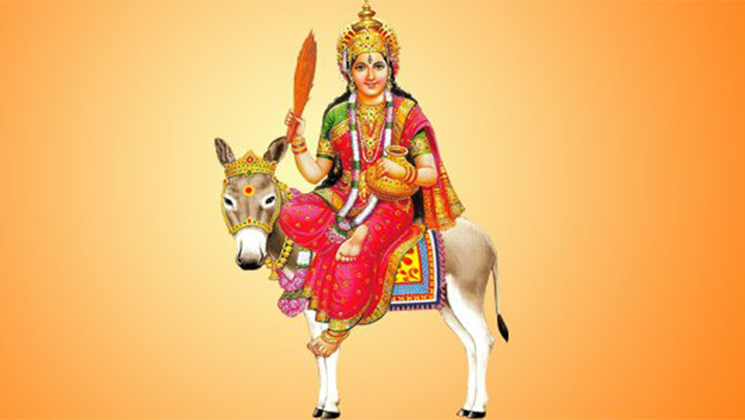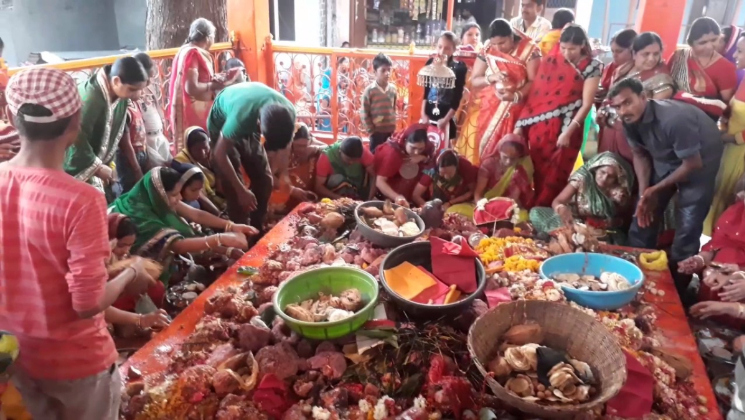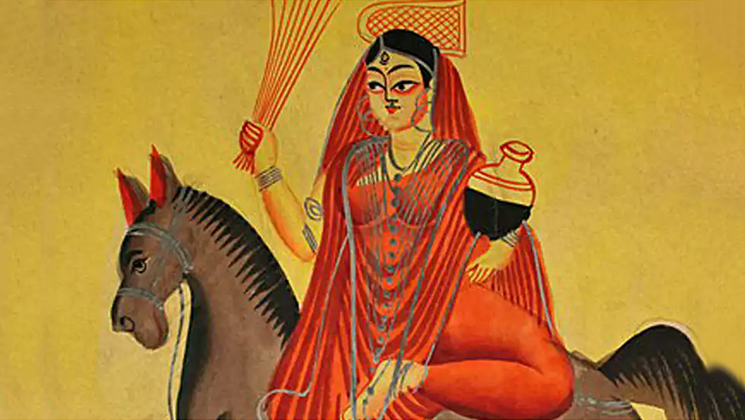- Sponsored -
Why measles is called Mata?

You all must be aware that measles is a communicable infection caused by the measles virus. A red flat rash normally starts on the face which later spreads to the rest of the body.
- Sponsored -

But Indians believe that measles is a blessing from the Goddess.Among different traditions, the infected individual is likewise called to have had ‘Mataji’. And you will be amazed to know that even medication is believed as an offense to the Goddess.
Have you ever wondered why is this so? By what means can a skin contamination be a blessing from God? What is the reason behind this? Well, this is what I have for you.
There are various myths and stories related to this tale, and some of them are listed below.

People still assume that God is the one who has control over the body of a human. In the same form, all the diseases are said to be given by the same divine power in form of anger or punishment.
In order to placate Sitala Mataji parents wait until about the fifth day and having wrapped their child tightly in a white cloth take them for a blessing at the temple. The tight wrapping also increases perspiration and the progression of the rash. On returning from the temple wet cow dung is used to make symbols resembling ⋂ on the wall of the house or house compound.

Cotton wool is spaced out evenly stuck to the dung. Red ceremonial worship powder is dabbed onto the cotton wool as Sitala is further encouraged to chill out (no pun intended) with prayers said in the child’s name. The symbols also serve to warn others away.
As expected in areas of counterfeit vaccines/medication and where less than half of “allopath’s” are properly qualified there are stories of families following doctors’ orders to the letter only to lose the child. Others who sought to placate Sitala Mataji and went to the temple found their child recovered. Some Hindu women suggest these beliefs and strong relationship between measles and Sitala are a “carryover” from when smallpox was a major killer.

The legend of the vengeful burning arises from the story of a poor daughter in law ordered by her cranky mother in law to prepare sweets and food for the Sitala Satam celebrations, which were the next day. The daughter in law did but exhausted and having fed her child about 11pm, fell asleep. At the stroke of midnight Sitala Mataji came by and was burnt by the stove which had not been put out. Sitala cursed this woman and said “As I was burnt so let your child be burnt”.
On waking the woman realised her folly and saw her child was burnt. Other villagers pointed out it was the young mother’s fault that Sitala had been pained by the hot stove, become angry and thus, that her child had become burnt. The woman got permission to seek Sitala in the forest and eventually came upon an old woman with dandruff and “some tiny microbes” in her hair. The old lady asked where she was going and if she could spare time to clean her hair of insects and such. The young mother being a rather selfless type complied, handing her baby to the old woman.

After about an hour the baby revived and cried and the mother suddenly realised the old woman was Sitala Mataji in disguise. Showing devotion she fell into the holy lotus position and begged forgiveness for her mistake. This made Sitala very happy who forgave the young mother and promised to always be helpful to her – as long as no stoves were left on on that particular day. The next year the young mother’s jealous sister in law purposely left her stove on so her child would be burnt by Sitala Mataji. She journeyed into the forest but ignored the old woman and returned with a dead baby.

Devastated, crying, seeking forgiveness from the young mother and praying with true devotion to Sitala Mataji she begged the goddess “to make the dead child alive”. Sitala Mataji then blessed this child and later the jealous daughter made a confession and asked for forgiveness. So, the festival became one celebrated with devotion. All sweets and food are prepared the day before. Stoves are turned off and sprinkled with water. Devotees have a cold bath in the morning, and it is women and small children who worship mostly seeking blessing from the goddess Sitala Mataji.
The impact of this legend may be rightly gauged as profound. The life and death of a child is solely down to offending or proper appeasement of the goddess Sitala Mataji. In some North Indian villages as reported by 74% of mothers believe measles cannot be prevented “whether through immunisation or otherwise”. It is a dangerous yet essential part of life. 70% believe no doctors should be seen lest the goddess – who resides within measles – is offended. Of 18 cases among Sikhs in India none were taken to a doctor. Three died

Apart from increasing perspiration, wrapping also prevents “measles-associated pneumonia” – a widely held fear. It is believed pneumonia is caused by cold. Even after recovery, isolation and wrapping continues to prevent “breathing problems”. Sitala has a brother god who causes the gasping for breath seen in pneumonia which suggests measles-pneumonia is also a part of Hindu mythology. In families with severe poverty and illiteracy other children die of dehydration from measles induced diarrhea, which is also seen as a means of removing the heat inflicted by Sitala Mataji.
In simple terms, in the cultures Dorey was misrepresenting, measles is seen as a curse from a goddess. One who demands in response such absolute devotion that children die as their superstitious parents fear offending her with medicine and instead smear cow dung on the walls of their home, pray and burn ritual herbs? In a fit of anger she attacks and burns small children through the fault of the mother who must then carry the burden of hit and miss spiritual appeasement. It is these very beliefs and others like them that will for a long time prevent significant reduction of measles in developing nations.
- Sponsored -
